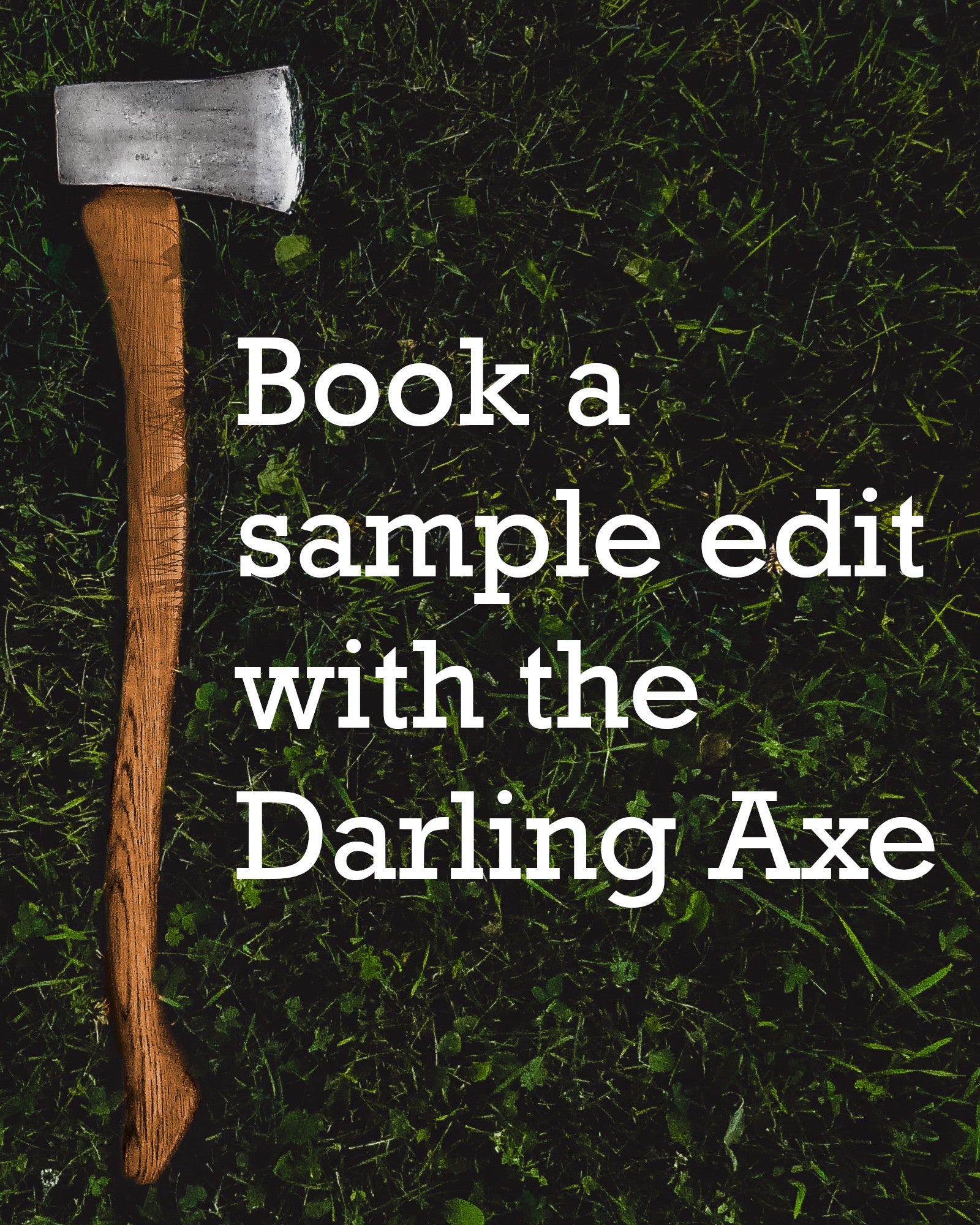Metafiction: When the Story Is in on the Joke

By David Griffin Brown
Dear Writer, This Fiction Is Fictioning
Metafiction is fiction that knows it’s fiction. It’s a novel with self-awareness. A narrator who winks at you while telling the story. It can be sly, philosophical, or absurd. But at its core, metafiction breaks the illusion of realism to call itself out as a construction.
Patricia Waugh defines it as “fictional writing which self-consciously and systematically draws attention to its status as an artifact in order to pose questions about the relationship between fiction and reality.” John Barth puts it even more succinctly: “A novel that imitates a novel rather than the real world.”
Metafiction isn’t a genre. It’s a mode, a technique, or sometimes just a device. It crops up in satire, literary fiction, fantasy, historical fiction, even memoir. Sometimes it’s subtle. Sometimes it tears down the fourth wall.
Writers use metafiction to question narrative conventions, mess with structure, parody genre tropes, or just have some fun. And while it can break immersion for some readers, it can also deepen engagement for others in a way that makes us active participants in the meaning-making process.
Tricks of the Meta-Trade
Here are some of the most common metafictional moves, with examples drawn from well-known texts.
Direct Address
This is when the narrator or text speaks directly to the reader. The illusion that the story exists in its own world collapses. You, the reader, are now part of the exchange.
In Moby-Dick, the narrator famously begins, “Call me Ishmael.” From that first line, the reader is involved. The narrator speaks directly to us throughout, reminding us that he’s telling a tale, choosing what to include (and what to leave out), and reflecting on the act of narration itself.
The Found Manuscript
This technique presents the novel as a document discovered or compiled by someone else. It builds a fiction around the fiction, giving it an extra layer of artifice.
In The Name of the Rose, Umberto Eco frames the entire story as a translation of a long-lost manuscript. The narrator claims to have pieced it together from fragments. The Scarlet Letter does something similar: the story is introduced as a document found in a custom house. Both texts use this device to play with authenticity while still drawing attention to the artificial frame.
Authorial Intrusion
This is when the author steps into the narration, often to comment on the plot, characters, or structure. It collapses the boundary between creator and creation.
In Don Quixote, Cervantes constantly reminds readers that he is retelling someone else’s story, that manuscripts are missing, and that he, too, is a character in this tale of storytelling. In Slaughterhouse-Five, Vonnegut appears as himself, narrating the events of the Dresden bombing, blending fiction and autobiography and disrupting the idea of a single, stable narrator.
Commentary on Narrative Conventions or Fictionality
This involves pointing out or mocking the storytelling process itself. The narrator or text may call out tropes, genres, or structural choices.
Deadpool from Marvel comics and film is pure meta. He’s in a story and comments on it constantly, mocking superhero clichés and narrative logic. In If on a Winter’s Night a Traveler, Calvino opens with a chapter directed at “you, the Reader,” who is trying to read Calvino’s novel. The book keeps restarting, reflecting on what it means to read and to write.
Intertextuality and Allusions
Metafiction often references other stories—real or invented. It creates a web of texts that highlight the artifice of fiction.
In The Neverending Story by Michael Ende, the protagonist reads a book that eventually includes him as a character. In The Princess Bride, William Goldman presents the novel as an abridgement of a fictional work by S. Morgenstern, complete with commentary. And in Anthony Doerr’s Cloud Cuckoo Land, multiple timelines and texts intersect through a fictional ancient Greek manuscript that impacts all the characters.
Self-Aware or Destabilizing Narrators
Not all unreliable narrators are metafictional. To qualify, the narrator must reflect on their own role as a fictional construct or draw attention to storytelling as a process.
In City of Glass by Paul Auster, the narrator fragments and unravels, eventually becoming indistinguishable from the author. The text collapses identity and authorship. In Yann Martel’s Life of Pi, the narrator offers two versions of the same story and challenges the reader to choose which one is "real." The metafictional element lies in the narrator’s invitation to reflect on the nature of storytelling itself.
Typographical and Formal Play
This includes visual experimentation, unconventional structure, or a disruption of the book’s physical format. It draws attention to the materiality of the novel.
In Tristram Shandy, Laurence Sterne includes an entirely blacked-out page to mourn the death of Parson Yorick. He adds squiggles to trace a character’s gestures. He rearranges chapters, skips over parts, and even includes a marbled page for no apparent reason at all. It’s all designed to interrupt the flow, to make the reader aware of the act of reading.
In Breakfast of Champions, Kurt Vonnegut uses stick-figure drawings and deliberately bad illustrations—an anus, a gun, a pair of underpants. He breaks narrative conventions on purpose, including himself as a character who meets his own creation. By announcing his control over the plot—and then abusing it—he calls out the artificiality of fiction.
What Happens When You Let the Story Know It’s a Story
Metafiction can be playful, rebellious, cerebral, or even emotional. It challenges the rules of realism and calls out the mechanics of storytelling.
Writers use it to:
- Critique genre conventions
- Satirize literary tropes
- Explore philosophical or political ideas
- Examine how narratives shape identity, history, or culture
- Acknowledge the impossibility of truly representing reality
But metafiction comes with trade-offs. It can break immersion. It can feel cold or distant if it leans too hard into cleverness. Some readers will disengage when the illusion collapses.
Still, metafiction doesn’t have to be emotionally flat. It can deepen engagement by creating intimacy. A narrator who says, “Dear reader, I’m making this up as I go,” can feel more human than an all-knowing omniscient voice. A character who knows they’re fictional can be heartbreaking—The Neverending Story does this remarkably well.
The trick is to balance emotional stakes with structural play. Metafiction is in part about breaking rules, but more than that, it’s about revealing them, questioning them, and sometimes laughing at them. Just don’t forget that your reader is also looking for an immersive, engaging story—and that requires characters who feel real, regardless of how much they knock on the fourth wall.
What Metafiction Isn’t
Not every quirky narrator or experimental structure is metafiction. Here are a few things that aren’t quite meta:
- A story with an unreliable narrator who hides information (Gone Girl)
- An epistolary novel that uses diary entries or letters to build realism (Dracula, Frankenstein)
- A frame narrative that doesn’t draw attention to itself (Heart of Darkness)
- A narrator who occasionally addresses the reader but doesn’t reflect on storytelling (Jane Eyre)
Metafiction requires self-reflection. It’s not just a weird structure or a direct address. It’s a deliberate move to call out the artifice, to make the story about story.
In Conclusion
Metafiction isn’t for everyone. Some readers want to lose themselves in a story, not be reminded they’re reading. But for writers looking to play with form, question the rules, or explore deeper themes about truth and narrative, metafiction offers a rich toolkit.
So, dear writer: if your novel wants to break the fourth wall, go ahead. Just make sure you have something to say when it does.

David Griffin Brown is an award-winning short fiction writer and co-author of Immersion and Emotion: The Two Pillars of Storytelling. He holds a BA in anthropology from UVic and an MFA in creative writing from UBC, and his writing has been published in literary magazines such as the Malahat Review and Grain. In 2022, he was the recipient of a New Artist grant from the Canada Council for the Arts. David founded Darling Axe Editing in 2018, and as part of his Book Broker interview series, he has compiled querying advice from over 100 literary agents. He lives in Victoria, Canada, on the traditional territory of the Songhees and Esquimalt Nations.








Kierkegaard’s Either/Or is one of the most brilliant of all of the « found manuscripts ». You might put it on your list.
I have another good one. When Odysseus tells the Phaiekons his story of going to hell and back they interrupt him and wonder if he is a « liar » Odyssey 11:362-76.
Anyway, thanks for a great article. It’s super important and interesting.
Also Plato’s Socrates calls Homer a « liar » in his Republic. Suggests he be run out of town. The Greek plays gave choruses that function this way.
Thanks for sharing this. It reminds me of The Last Kingdom series, where the MC is telling his life story as an old man. More interestingly, the MC is an ancestor of the author.